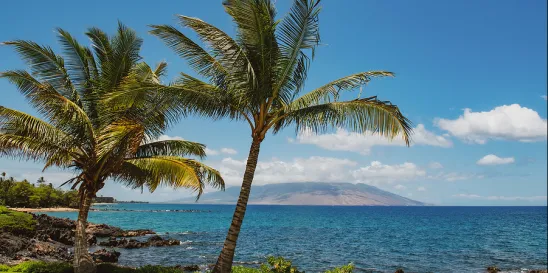The Biden-Harris Administration recently released the first-ever United States Ocean Justice Strategy (the “Strategy”). The Strategy, which was called for in the Administration’s Ocean Climate Action Plan, is intended to advance the Administration’s stated goals to promote environmental justice for communities that rely on the ocean for their cultural, spiritual, economic, food, and recreational needs. It outlines a five-part vision of how the Administration will integrate equity and environmental justice principles into federal ocean activities through overarching goals, principles, and practices to further the goal of “ocean justice.”
Recent Environmental Justice Reforms
The Strategy comes after significant changes by the Administration to its handling of environmental justice concerns. Executive Orders (“EO”) 14091 and 13895 promote advancing equity for all, including underserved, marginalized, and impoverished communities. Relatedly, EO 14008 established the “Justice40 Initiative,” establishing a goal of 40 percent of Federal investments’ overall benefits dedicated to issues faced by disadvantaged communities, particularly those subject to underinvestment and overburdening by pollution. Building on the Justice40 initiative, EO 14096 directs all administrative agencies to add environmental justice to their missions and to restore and protect a healthy environmental for all people by preventing pollution and addressing climate change, among other matters. Furthermore, two EOs prioritize environmental justice considerations in the Administration’s ocean policies, EO 13547, related to government’s stewardship of the Ocean, Our Coasts, and the Great Lakes, and EO 13840, promulgating an ocean policy with the intent to advance the United States’ economic, security, and environmental interests. Resources on the Administration’s environmental justice rulemakings are available: here (EO 14096), here (EO 14091), and here (Climate and Environmental Justice Screening Tool).
The Ocean and its Relationship to Coastal Communities
Approximately 40 percent of the United States’ population lives along a coastline of the ocean or Great Lakes (collectively, the “ocean”). The ocean provides the United States with vital benefits including economic activity, sustenance, recreation, and cultural and spiritual wellbeing. Recognizing the importance of the ocean to communities, as well as the inequities related to access to the ocean’s benefits, the Administration hopes that its Strategy will have a twofold purpose: reflect on past, current, or future ocean impacts, and improve the wellbeing of communities connected to and dependent on the ocean.
Not only are many of the communities located near the coastline or dependent on ocean resources prevented from sharing equitably in the benefits provided by the ocean, but many of these same communities are disproportionately burdened by human activities in and around the ocean. Past racial discrimination and marginalization has also contributed to inequitable investment, siting, and growth of coastal infrastructure such as ports, refineries, and landfills. Moreover, Black, Latino, Indigenous and Native American, Asian American, Native Hawaiian, and Pacific Island coastal populations may be disproportionality affected by environmental health and hazards related from industrial development coastal activities or harmed by environmental impacts such as overfishing. Furthermore, as oceans are tied closely to climate change, those same communities are disproportionately impacted by extreme weather events and other climate-related threats.
In recognition of the close tie between climate health and the ocean, the Administration in March 2023 released its Ocean Climate Action Plan, which called for the creation of the Ocean Justice Strategy to identify barriers and opportunities to integrate environmental justice principles into federal ocean activities. Following requests for public comments, tribal consultation, roundtables with U.S. Territories and Native Hawaiian organizations, and an Ocean Justice Summit, the Administration released its Ocean Justice Strategy that lays out overarching federal goals, principles, and practices for the Administration hopes will provide long-term, sustainable benefits for people, communities, and the environment.
The Administration’s Vision for Ocean Justice
The Strategy developed a “vision” that includes five elements:
- Equitable access to the benefits of a healthy and resilient ocean and sustainable ocean economy.
- The Administration believes that everyone should have access to the benefits of the ocean. These benefits include enjoyment, recreation, sustenance, education, and others. The Vision recognizes that in order to maintain benefits for future generations, we must curtail environmental and health impacts.
- Meaningful engagement in federal ocean activities for all communities.
- The Administration notes the need to include communities that have been historically excluded from ocean policy decisions. The Vision also aims to provide information and enhance capacity building of marginalized communities.
- Recognition of the value engagement with Tribal Nations, Indigenous Peoples, and Indigenous Knowledge in ocean decision-making and research.
- Indigenous Knowledge should be included in Federal decision-making, and Federal departments and agencies should follow the principles set forth in the Guidance for Federal Departments and Agencies on Indigenous Knowledge and Memorandum on Uniform Standards for Tribal Consultation.
- Expanded and improved ocean education to build knowledge about the ocean and create a diverse and inclusive ocean workforce.
- This element seeks to make an ocean economy accessible to ocean justice communities by providing jobs with a living wage, education, skills, training, and other assistance to build local capacity and workforce in such communities.
- Application of an ocean justice lens to ocean research and ways of knowing.
- The Federal Government should apply equitable and accessible practices to the process of ocean research, including co-production of research within coastal and ocean communities and technical assistance to build capacity.
The Strategy’s Goals for Federal Action on Ocean Justice
Building on the Vision described above, the Strategy sets out three goals:
1. Embed ocean justice in federal activities.
- The Administration must provide more meaningful opportunities for community engagement, incorporate equity into funding processes and budgets, and ensure federal products are accessible (e.g., websites and informational documents are properly translated for various communities). The Strategy encourages federal agencies to create new programs, develop guidelines for how programs impact or relate to ocean justice communities, and develop and use ocean justice metrics in federal programmatic evaluations, and make public engagement and funding applications less complex and more accessible. As an example of federal success in ocean justice practices, the Strategy highlighted the Papahānaumokuākea Marine National Monument where it says guidance gave “a clear voice to Native Hawaiian culture in the Monument’s stewardship.” The Administration notes that agencies and individuals have championed the relationship as an example of the successful stewardship of natural and cultural resources that resulted from providing Native Hawaiian authority in resource management.
- Develop a diverse, equitable, inclusive, and accessible federal ocean workforce, including the leadership pipeline.
- Relating to staffing practices and recruitment needs of federal agencies, this goal intends that employees of federal agencies will have a greater understanding of local contexts and therefore more productive federal actions. In addition, it directs agencies to consider allowing remote work for those in place-based communities, such as citizens of Tribal Nations. This goal comes with a commitment to recruit individuals from ocean justice communities and indigenous peoples as well as students and early career professions.
3. Enhance ocean justice through education, data, and knowledge.
- This goal expresses the importance of Indigenous Knowledge and the unique perspective and expertise that should be included with consent and respect for confidentiality. The Administration urges agencies to recognize, consider, and apply Indigenous Knowledge, and to train staff on Indigenous knowledge policies and procedures by looking to Tribal Nations and Indigenous Peoples to lead and participate in the trainings. Importantly, this goal encourages those conducting research in, with, and around Ocean Justice communities to ensure that this research is done in a culturally appropriate way—i.e., giving a voice to those communities throughout the research. Finally, the Strategy provides selected environmental justice tools including, for example, the Community Social Vulnerability Indicators Toolbox provided by NOAA Fisheries and Climate and Economic Justice Screening Tool developed by the Council on Environmental Quality.
What’s Next?
The Administration will continue to incorporate environmental justice into its policies and rulemakings. Previously, in June 2023, the Administration requested information and comment on its forthcoming National Strategy for a Sustainable Ocean Economy (“Sustainable Strategy”). Although it is uncertain when the Sustainable Strategy will be issued, we can expect to see significant value placed on incorporation of environmental justice policies and practices, likely aligned with the Strategy’s goals and vision.





 />i
/>i

